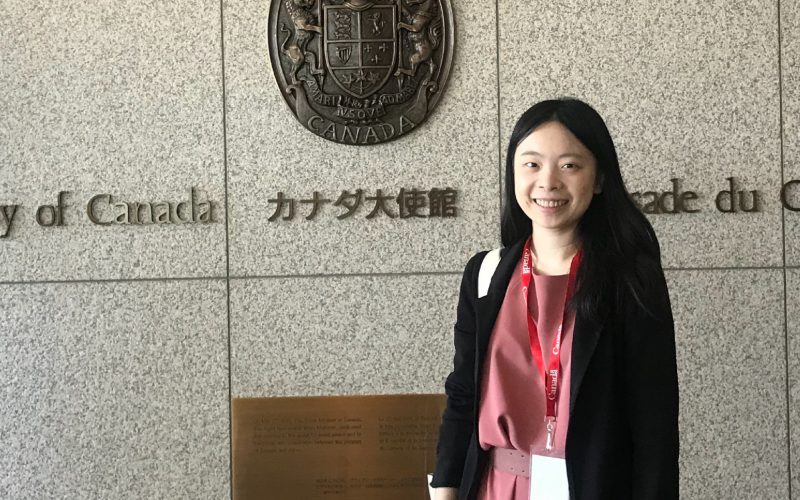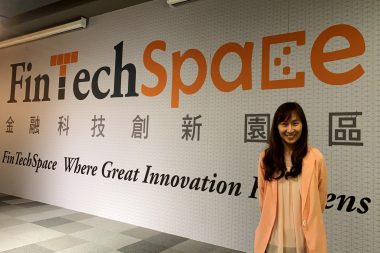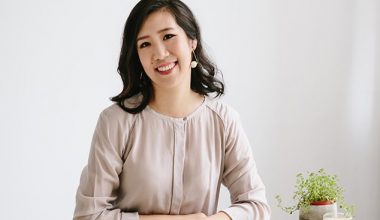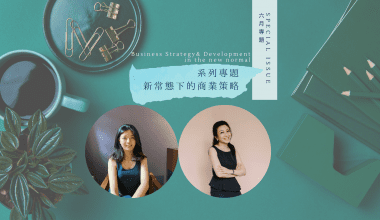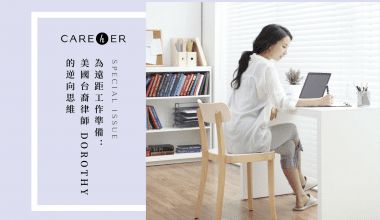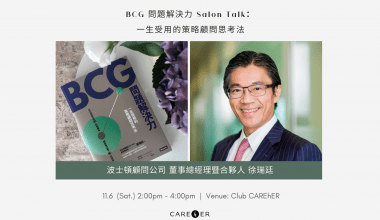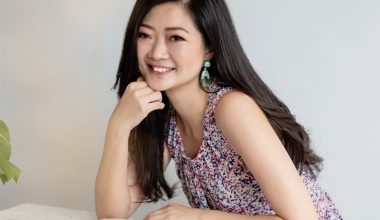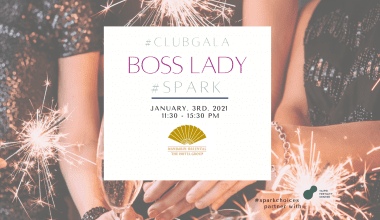【CAREhER ✕ Women Who Code Taipei】系列專訪 Ep.3
歡迎收聽20-20 Women Lead Podcast, 我是今天的主持人曹代,20-20 Women Lead Podcast 是 Women Who Code Taipei 今年重要的專案之一。在接下來每一集的節目中,我們都會邀請一位科技女性來分享她們的故事。
在今天的節目裡,我們邀請到了加拿大智慧醫療新創公司Studio 1 Labs的執行長Olivia Lin。Olivia是在加拿大長大的台灣人,不但是認知心理學博士、也是引領國際新興紡織技術發展的重要推手,最近也榮獲Girls in Tech Taiwan 40 under 40 (2019年四十位傑出科技女性)的肯定,Oliva會跟我們聊聊他是如何看到國際長期照護市場的需求、分享他們的產品「智慧床單」對於長照與醫療品質的影響、為什麼她會選擇拓展服務到台灣、以及她身為一個女性創業家的優勢與挑戰。
編按:以下為英文逐字稿,你也可以看我們的Medium頁面看中文摘要。
Tai Tsao:Hello and welcome to episode No.3 of 20-20 Women Lead Podcast. I’m your host for this episode, Tai Tsao.
By 2026, Taiwan will become a super-aged society where at least 20 percent of the population are 65 or older. Japan and Germany are already super-aged and Singapore, South Korea, the US, UK, and France will also enter the super-aged era by 2030. With this trend, more and more companies and researchers are developing smart medical devices to provide better elderly care. Our guest today, Olivia Lin, is one of the pioneers who are revolutionizing patient health tracking.
Olivia is the Executive Director and co-founder of Studio 1 Labs, a Canadian technology company that specializes in unique fabric sensing technology. They developed an “intelligent bedsheet” with this new technology to collect patient health data, including respiratory patterns, bed exits and more.
I had a delightful conversation with Olivia. She talked about what “implicit memory” is and how it influences the product design and the technology behind “intelligent bedsheet”. She also talked about why she chose to expand in Taiwan, as well as her personal journey–why she decided to become an entrepreneur and her learnings and challenges as a female leader. Olivia also shares a very special, touching story at the end of this episode.
As a practitioner in leadership development, I’m super excited for you to learn from her journey.
So let’s get to it.
Olivia, I’m so glad to talk to you today.
Olivia:Thank you for having me today.
1. First, I learned that you have Ph.D.in cognitive psychology and you’re a self-taught coder, a designer and you’re wearing multiple hats with your role at Studio 1 Labs. Would you tell us a little bit more about your background and what problems do you see that drive you to found Studio 1 Labs in the first place?
Sure, I received a Ph.D. in cognitive psychology 3.5 years ago. I was really researching on how training can affect human memory, especially in younger adults and older adults. Throughout my Ph.D. studies, we were very well-trained in scientific, research methods, advanced statistics and different aspects and principles of psychology. Through that, I was interested in a memory process called implicit memory. Those are memories that are formed without really being explicitly being aware of it. Using that concept, I was really interested in developing a product that is friendly to users and doesn’t change users’ behavior. My background certainly helped us with academic and industry collaborations with writing grants, especially for funding processes, also writing protocols for pre-clinical scientific validation and I’m really focused on usability and making sure the product is friendly in general.
2. It’s interesting when you talked about implicit memory and not changing people’s behavior. Would you share more about how does it relate to intelligent bedsheet, the product you’re developing?
Memories can be formed relatively into two ways: one is explicit; for example, through repetition– repeating words over and over again. What I was really interested in pure implicit memory, so people don’t really know that they’re learning, but then in [behavioral] responses in how they intend to [use that] information, it becomes very clear if your research is examining the results for it. That’s what I’m really interested in, and I was also really interested in practice effects—how does practice affect memory. So these concept is what I try to incorporate when we’re looking at the product development: how do we make sure that senior adults using our products—They don’t need to wear anything, they don’t need to change their behaviour but they can easily use our products.
For senior adults, it’s challenging for them to remember to take their medicine, so it’s another external thing that needs to remind themselves. Like you said, if it’s part of their lives, it’s implicit in a way that they don’t even notice it, maybe it’s easier and not obtrusive.
Right. There are many case studies, for example, of those people who have lost their memory or due to Alzheimer’s disease and dementia and they are able to still retain some of the other forms of memory like procedural memory. For example, riding a bike, playing the piano—they are still able to do that but more often explicit awareness of their memories, they are the first to go. So if you train people to incorporate concepts where they don’t have to be explicitly aware, they can be retained a lot longer.
3. So that brings us to your product. You mentioned that “intelligent bedsheets” could transform any bed into a patient vital signs monitoring system. Would you share with us how it works?
Sure, our intelligent bed sheet is special because it is soft, it’s made completely by fabrics.
We’re looking at one right now.
…especially on the sensor side. For the monitoring segment, there is no attachment to the user’s body and they can detect trends or alert about bed exits if someone is on a bed for too long, to prevent any pressure source and in general movements and location. That’s going to be our first-generation product and we’ve also been utilizing data in order to model respiration—looking at how people breath, shallow vs. deep. But that is going to be a lot more refined for future generations.
The fabric itself technically can be used in different applications but we are really gearing it toward medical grade device because we’re very interested in the dynamic range of data that we can collect and then we can share whether it can be precise enough for higher quality for trends.
Could you share more about what dynamic data set means?
We collect a lot of data in the backend, per second, as well as the range of data when someone is on it, we can capture the sensitivity a lot better. We can [then] utilize these data for more precise calculations for long term trends.
4. I’m curious about this product because my grandma is 86 years old and she’s constant falling at her home. One of the features of this intelligent bedsheet is to prevent falls for elders. Would you share a bit about how does that really work?
We’re not at the prevention [part] yet. We are detecting if someone is getting off the bed. Our use is that the pattern of falls is going to be a little bit different than from some is getting up. We can look at the trends that way in order to pick up that differentiation so that’s where the monitoring happens.
A lot of Institutions are also very curious about activities at night– how many times someone gets off the bed, for how long, sometimes correlating to the sleep pattern as well. We focus on bed exit, prolong pressure and outputting trends that way.
So it’s more holistic than wearing a Fitbit to detect your small activities, right?
I think wearing a Fitbit is great because they’re wearing it all the time, so it doesn’t matter whether they’re up or not. But what we found out when we’re pre-clinical scientific validation with a university on older adults, they don’t like wearing thing while they’re sleeping, so that’s the main difference. For example, we also compared it with pulse oximeters, and people do not like wearing it at night. They can’t really feel the bedsheet, so they don’t really need to change their behaviour of any kind.
That’s fascinating because earlier you mentioned “implicit memory” and that’s part of your drive to make sure it’s integrated in your product design.
Right.
5. You decided to bring intelligent bedsheet back to Taiwan, what are some opportunities do you see in the Asian market?
We originally came to Taiwan to find manufacturing partners. Taiwan is great at hardware manufacturing and textile manufacturing. Both are key components to our product and it naturally makes sense to come to Taiwan to look for partners. As for Asia market, there is an increasing rise in aging population and we would see it more impacted first in Asia so this gives us a great opportunity for Asia market as well.
The percentage of the elderly population has been sky-rocketed.
Yes. For example, Japan is considered a super-aged society, and Taiwan is following very closely.
So there are a lot of opportunities and needs in societies like this.
Olivia: And then I think we’d see some of these changes in technology and implementation happening first in Asia.
6. Awesome! We learned a lot about the product. Now let’s shift gears a little bit. Many of our listeners would love to learn about your journey as an entrepreneur. You co-founded Studio 1 Labs in 2015, right after you finished your Ph.D. degree. Would you share a little bit more about your journey as an entrepreneur?
My co-founder Edward Shim and I met at the University of Waterloo in Canada. Edward has a background in liberal arts, served in the Canadian military and has gained lots of experience at the time in terms of emergency response. He was coming from the healthcare perspective and I’m also coming from a cognitive psychology background. We decided to combine our visions together and right now our vision is to provide softness and sensitive touch to everyday objects and using it at Health Care application as our first avenue for commercialization.
At the end of my Ph.D., I was also really interested in textile research. I looked at the capability how can we increase the functionality of textiles. And Edward was really interested in the sensing capabilities. So we combined it and started this company together.
It seems like a natural path to have fabric-sensing technology embedded in this product.
7. In the past few years, what are some challenges you faced as an entrepreneur?
I think one of the most memorable and our first major challenge is to overcome people’s perception that Edward and I are not from a traditional technical background. For example, Computer Science background or engineering background. But what we ended up doing was utilizing our academic-industry collaborations and using a third-party validation for our fabric sensing technology. We went through three different pre-clinical validations with different universities with different populations so that we can really see what the capability of our fabric sensing technology has.
Thanks for sharing with us because it’s important to establish your credibility as the co-founders of the company. It’s really smart that you leverage different resources to help boost the confidence in your users and investors.
8. Now I’m curious what’s something you wish you have learned earlier in your journey as a leader?
Sure, In the past, especially for my studies, I wish I have taken a lot more diversity in terms of courses to help me prepare for this entrepreneurship journey. What I realized very early on is that if you have a male co-founder in terms of meeting, usually the attention goes first naturally to the male co-founder. That’s my experience initially, and…
That’s very common.
It is very common. Not just for me and I’m sure a lot of women entrepreneurs feel that way as well. What I also realize that I needed to work out myself confidence as well as my delivery in terms of what I speak. I usually speak very technically, and sometimes it doesn’t connect with the people. I realize I have to change my method in terms of delivery for different people to understand.
Recently, I was very fortunate and very honored to be on a Canadian Mission for “Women-Only Business Mission to Japan.” This is with very top women leaders across Canada from universities, from health care institutions, companies, associations where we were talking about the care economy and also Elderly Care. And I was also speaking on a panel to discuss where are the challenges for the women entrepreneurs, women leaders, and also others in terms of elderly care in general.
What are some of the key takeaways?
What I learned is, we should see more women in a leadership role. And this was very valuable. Because I realize some of the advice and guidance coming from women leaders are a little bit different from male leaders. They were just different perspectives. I think it diversifies how you think. And it also changes your mentality when you try to achieve your goal. Another thing I think all women entrepreneurs experience is that traditionally women face more barriers when accessing capital, expertise, and networks, so this mission was very special because it helped create an opportunity for international networks and partnerships.
Yes, that’s one of the reasons we started this podcast because we want to feature more women leadership experiences and to share those stories with our audience, so people know they are not alone in the process and we have a community behind it to support each other.
9. As we come to the end of the interview, any parting advice you’d like to share with aspiring female entrepreneurs out there?
Sure. I would encourage entrepreneurs to seek advice as early as possible from many different people from different backgrounds. That will be very important for your journey.
For female entrepreneurs, we have to distinguish our own strengths and it is important to find that works for you and use it, not necessarily always following other people’ advice, but gauging what works for you and following that.
And use our own judgment, right? Because a lot of time, for women, you get a lot of advice. At the end, it’s hard to make that final decision.
Yes, and it’s really hard for me to do that. I usually take a lot of peoples’ advice but sometimes I feel like that I’m not engaging my own judgment in those advices. That’s very important for women.
I also want to share one last story with everyone. I wanted to take this opportunity to thank a stranger and a coffee shop near Beimen station in Taipei who was very kind and gave me encouragement through just a simple cup of coffee. In one of my lowest time, a stranger with two dogs passed by and saw that I was very down. A while later, a lady tapped me on the shoulder and offered me a latte. She told me she was from the coffee shop down the street and a gentleman with two dogs saw me that I was very down and bought me coffee. To me, I just temporarily moved back to Taiwan, I felt very touched and honored to be surrounded by supporting and kind people, even from strangers! Thank you for the encouragement. It really made my day.
Thank you for this touching story. A small gesture would make a big impact on other people’s lives.
Yes, I’d also encourage more people to give support to the people around you.
Thank you so much for sharing your story with us today, Olivia. If our listeners want to learn more about what you do and keep up with the amazing thing you are doing at Studio 1 Labs, where can they find you?
Sure, you can visit our website, it’s www.studio1labs.com. There is a contact form, where you can reach us at.
We’ll also put those information in our show notes. Thank you, thank you so much for coming.
Thanks for having me today.
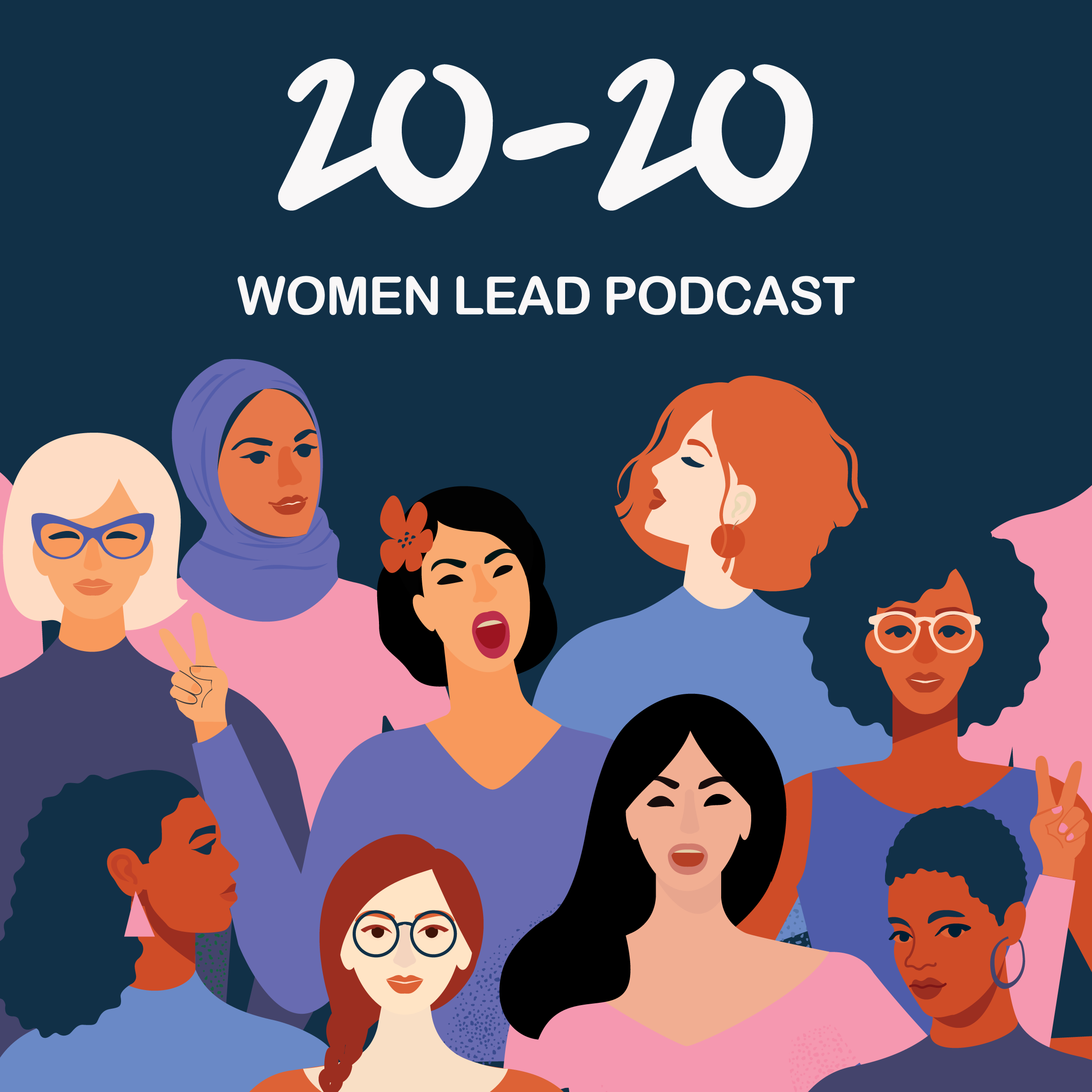

/ About
20-20 Women Lead Podcast 希望能鼓舞科技女性勇於突破,逐漸消彌「科技業」兩性主管的比率差異。 透過訪談,帶聽眾了解,正在/已經踏出與眾不同一步的科技女性所作的事與心路歷程。
在 2020 年前我們將訪問 10 位女性、製作成 10 集、20 分鐘的節目、在每月的 20 號發佈。希望能啟發科技女性,率先採用新的技術、設計嶄新的產品/服務、或創造新的模式。鼓勵女性勇敢踏出「與眾不同」的一步、接受挑戰。
